A wonderful hybrid for growing in the open field - we plant the tomato "Juggler f1"
Tomato Juggler f1 is grown in both seedling and non-seedling methods. The painstaking work of Russian breeders was crowned with success: a hybrid was obtained, which gives an excellent harvest even in regions with a cool climate. The juggler pleases gardeners with large fruits with a rich taste and universal use.
The culture is popular not only among summer residents, but also among entrepreneurs. The Juggler hybrid is in high demand in the sales markets.
The content of the article
Characteristics and description of the variety
Tomato belongs to hybrid crops, the genes of which have a high resistance to diseases of the Solanaceae family. Recommended for cultivation in the open field and in greenhouse conditions.

Distinctive features
A type determinant, the height depends on the place of growth: in the open field it reaches 70 cm, and in the greenhouse more than 1 m. The bush is sprawling, branched, the leaves are dark green, the inflorescences are simple. Each branch sets 5–7 fruits.
The ripening period is early, from the moment of planting the seeds to full ripeness, 95–100 days pass. It takes root well both in the open ground and in greenhouse conditions.
The hybrid is resistant to drought, not picky about watering... The yield is high, from 1 sq. m, up to 15 kg of selected vegetables are harvested, provided that 4-5 seedlings are planted per 1 sq. m.
Differs in high resistance to diseases of the tomato series and pests. Not susceptible to fungal infections.
Fruit characteristics
The average weight of fruits is 230–250 g, flat-round shape, deep red color. Despite the fact that Juggler f1 is a hybrid and not a variety, the taste of the fruits is rich, sweet, with an obvious sourness characteristic of tomatoes, the pulp is juicy. The skin is dense, does not crack during heat treatment - ripe vegetables are suitable for conservation. Juggler f1 hybrid tomatoes retain their great taste in fresh dishes.
When processing vegetables, delicious juices, ketchups, adjika and pasta are obtained. Thanks to their dense pulp and strong peel, tomatoes are transported over long distances and stored for a long time without losing their taste and appearance.
The photo shows the tomatoes Juggler f1.
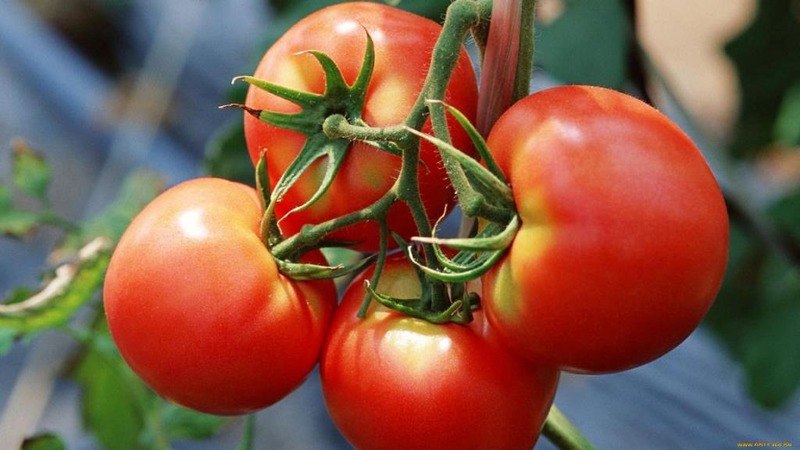
How to grow seedlings
The hybrid can be grown in two ways: seedling and seedling. When sowing seeds at home for seedlings, it is imperative that the seed is prepared.
Seed preparation
Seed material purchased from a specialized store is almost ready for planting: the manufacturer has already disinfected and calibrated. It remains only to soak the seeds in a growth stimulator for 10 hours. This procedure will improve the germination rate. Means are used not only for industrial production, but also for folk, and the latter are in no way inferior to biological stimulants.
Of the folk methods, potato juice, aloe juice and melt water are used. Aloe juice additionally disinfects the seed material, and potato juice enriches it with nutrients. Melt water is obtained from snow heated to room temperature.
Reference! Growth stimulants are organic substances that affect the growth and development of plants.
Preparing the container and soil
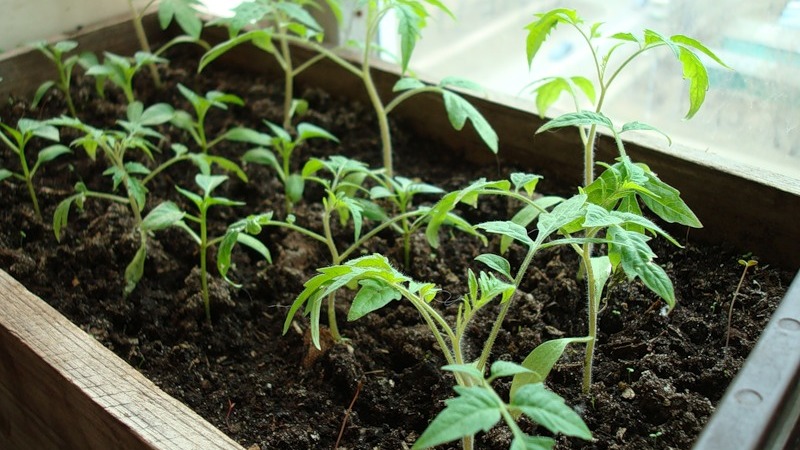
The soil for sowing seeds is prepared from a mixture of garden soil, humus and river sand in equal proportions. Disinfect the prepared soil in the oven at 60 ° C for 10 minutes or spill it with a hot solution of dark manganese. The decontaminated soil will ensure healthy growth of young plants. Also, the primer can be purchased at the store. As a rule, purchased soil does not need decontamination and additional preparation.
Any capacity will do. You can plant both in a general and in a separate container. Of the general packaging, a box is most often used, and plastic cups, paper honeycombs or peat pots are used as separate containers. When planting in separate containers, you can further exclude the picking of seedlings.
Before sowing, the prepared containers are treated with a solution of dark-colored potassium permanganate for prevention purposes and small drainage holes are made at the bottom.
Sowing
The seeds are buried 1.5 cm, sprinkled with soil on top, slightly moistened from a spray bottle with warm settled water and covered with a film, artificially creating a greenhouse effect. The containers are left in a bright room at a temperature of + 23-25 ° C until shoots appear.
We take care of seedlings
After sprouting, the containers are placed on the windowsill to provide the sprouts with sufficient light. With a lack of daylight hours, the seedlings will stretch and weaken, which will further delay their growth and development.
Reference! With a short daylight hours, additional lighting is installed using fluorescent lamps.
Watered as the top layer of the soil dries up with warm, settled water from a shallow watering can or an ordinary tablespoon. It is impossible to fill in seedlings, the accumulation of excess moisture will provoke rotting of young roots. Also, with a large amount of moisture, the risk of a dangerous disease increases - black leg. The cause of the appearance of the black leg is protobacteria of the genus Erwinia. The disease can destroy all plantings.
Reference! In the specialized literature, the term "black leg" is not used, since it is the general name for a group of diseases with similar symptoms. It is characterized by a darkening of the stem at the very surface of the earth, it affects the seedlings of vegetable and flower crops grown in indoor conditions or in greenhouses.
After watering, the soil is loosened to improve the air permeability of the soil. Oxygen influx has a positive effect on the root system.
When two real leaves appear, a pick is carried out, seating them in separate containers. If the seedlings are left in a common container, then the distance between the seedlings is increased by planting them no closer than 15 cm from each other.
Before being transplanted into the ground, the bushes are hardened in the open air, taking them outside for 40-50 minutes. The residence time is increased by 30 minutes every day. The hardening is carried out within 10 days.
How to grow tomatoes
Seedlings are transplanted into the ground two months after sowing the seeds. By this time, at least four true leaves are formed on the bushes. The beds are chosen in a sunny place, protected from drafts.
Landing
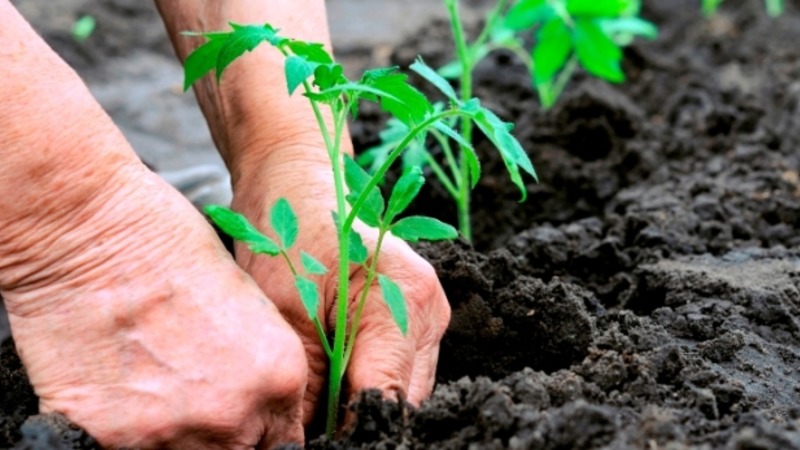
The soil is prepared in advance: dig up and add a full range of minerals. They make holes 15–20 cm deep and fill them with water.
Transplanted on a cloudy day or in the evening after sunset. Thus, the seedlings will sooner root and grow.
They are planted in the holes together with a lump of earth, without disturbing the root system. After the transplant, the holes are compacted and watered with warm, settled water.
Further care of the tomato Juggler f1
Regular watering is established as the seedlings take root in a new place. Water in moderation, no more than twice a week. The peculiarity of this tomato is that it does not suffer from a prolonged lack of watering, so it is not so scary not to water the plants as it is to fill them.
The root system suffers from an excess of moisture, and the seedlings begin to ache.Water it early in the morning or in the evening, but not in the scorching sun. To retain moisture in their beds mulch peat or straw.
Reference! Watering during the day can cause leaf burns.
After moistening, the soil is loosened and all weeds and roots are removed so that nutrients are spent on the growth of seedlings, and not on weeds. Many pests that are dangerous to tomatoes live in weeds.
Top dressing make once every three weeks. During the season, seedlings are fertilized at least four times. The first top dressing is applied two weeks after transplantation. Watered with mullein infusion in a ratio of 1:15. The second is carried out at the time of flowering culture. A full range of minerals with a predominant phosphorus content are introduced.
During the formation of the ovaries, phosphorus and calcium are introduced, and at the time of fruiting, potassium salts are added for faster ripening of the fruits.
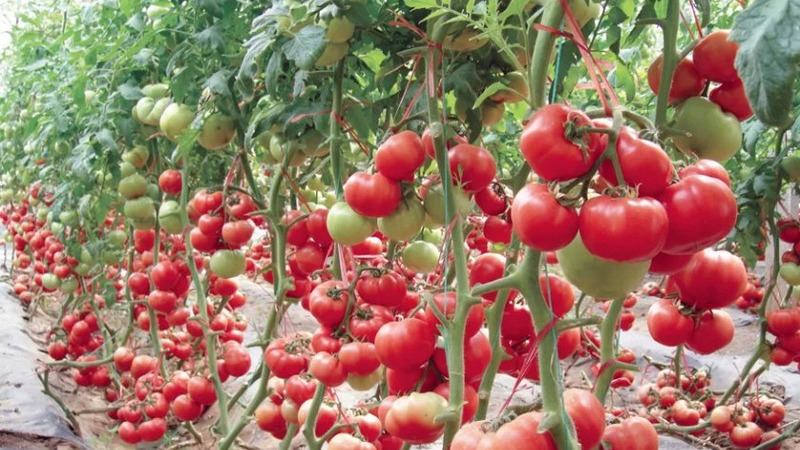
Features of cultivation and possible difficulties
The fruits of the Juggler hybrid are heavy, as they ripen, they can break fruitful branches... Therefore, after transplanting, a support is installed next to each seedling, to which tie up branches as they grow. The stem is also fixed, since it cannot withstand the weight of numerous fruit-bearing branches. The bush is formed into 3 stems, removing all other stepsons.
The lateral processes of the stems thicken the plantings, so pinching is carried out regularly. The density of the bush can lead to the spread of fungal diseases.
Reference! Stepson - This is a lateral shoot that emerges from the axils of the leaves, and interferes with the full ripening of the fruit.
Diseases and pests
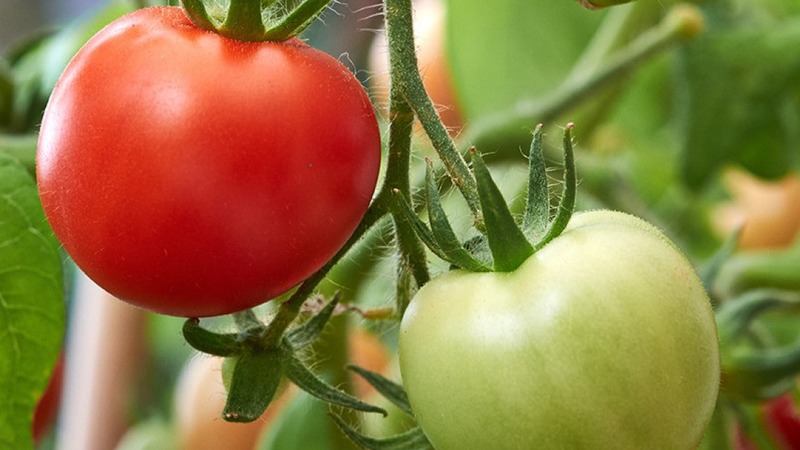
Summer residents in their reviews report that the vegetable culture practically does not get sick. This is a very compelling reason to grow a hybrid on your site. However, experienced gardeners do not forget about preventive measures, which include weeding, loosening, and moderate watering. Treatment with "Fitosporin" not only protects plants from damage by fungal spores, but also increases immunity.
From insect pests, the hybrid is also endowed with immunity, so it is quite enough to plant sharp-smelling herbs between tomato seedlings: calendula, mustard or marigolds and spray young bushes with infusions of nettle, onion husks and plantain.
Crop rotation rules are essential for healthy growth and development. If they are observed, the culture not only remains strong and healthy, but also produces delicious fruits. Cabbage, pumpkin seeds, carrots, beets, and green onions are good precursors for tomatoes.
Nuances in care for cultivation in open ground and in greenhouses
A distinctive feature of the hybrid is the ability to plant seeds immediately on open beds, without growing seedlings. This method is used mainly by residents of the southern regions. Caring for a tomato is no different from growing through seedlings.
When planting in the ground, it is necessary to observe the distance between the tomatoes, despite their small growth. Closely planted sprawling bushes will prevent each other from receiving sunlight and ventilating, which will undoubtedly affect their development.
When planting in a greenhouse, it is important to replace the topsoil with a new one. In a greenhouse shelter, spores of pathogenic fungi and pests successfully winter. When plants are planted in unhealthy soil, the seedlings die quickly.
In greenhouse conditions, tomato bushes are attacked by such a pest as a spider mite. To protect planting from insects, it is enough to ventilate closed structures daily. Fresh air destroys the habitat of the greenhouse pest.
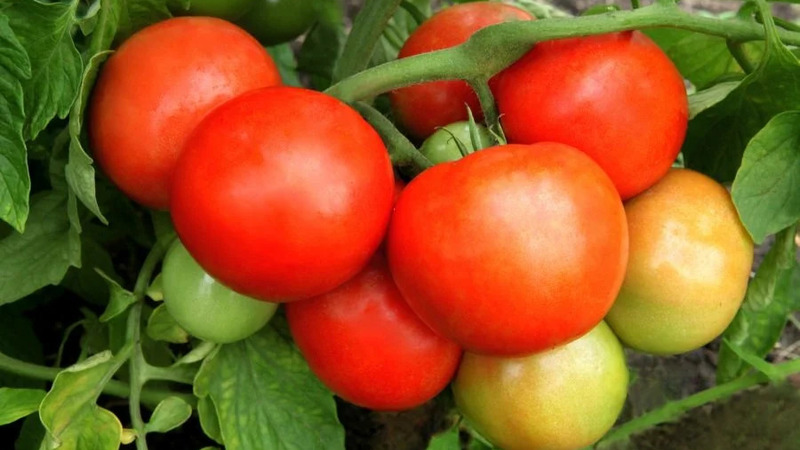
Harvesting and application of the crop
Tomato Juggler f1 refers to early maturing hybrids. This makes it possible to harvest fully ripe vegetables in the middle of the summer season. They are put into processing, getting excellent tomato products: juices, pastes. It is consumed fresh, preparing a variety of dishes for every taste and fantasy.The hard skin of the fruit allows you to harvest canned food, pickles and pickles - tomatoes do not crack during heat treatment.
Ripe vegetables are well stored and can withstand long-term transportation over any distance. For these reasons, the hybrid is bred by entrepreneurs for industrial purposes.
Advantages and disadvantages of a hybrid
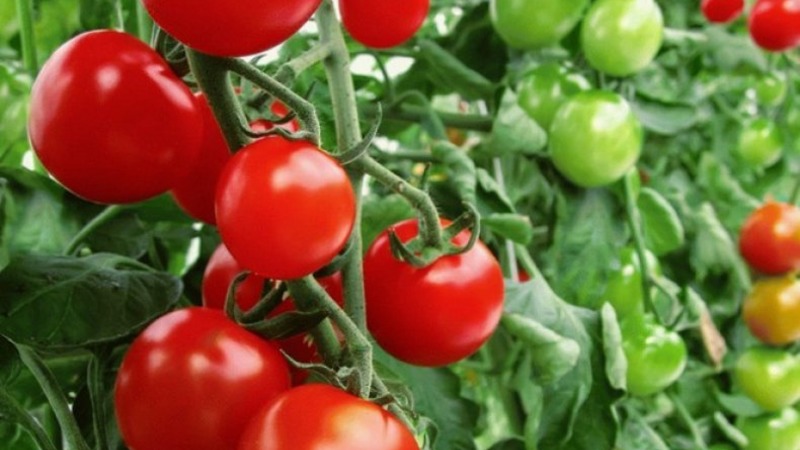
List of the main benefits of tomato juggler:
- the possibility of breeding in two ways - seedling and planting in the ground;
- early ripe hybrid;
- immunity to diseases;
- high rate of fruiting;
- uncomplicated agricultural technology;
- growing on an industrial scale;
- great taste;
- safety of presentation for a long time;
- long transportation;
- versatility in application.
Conditional disadvantages include the need for pinching seedlings and mandatory fixation to the support.
Farmers reviews
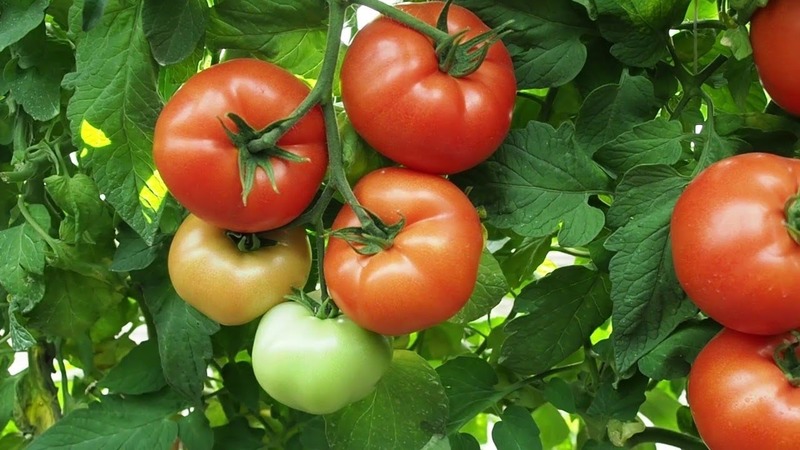
Gardeners respond positively to the Juggler f1 tomato and recommend planting it on their plots.
Mikhail, Perm: “I have been growing this hybrid for several years. It is surprising that it easily adapts to any climatic conditions, which cannot be said about other varieties. The harvest is always excellent, tasty, enough for fresh salads and numerous preparations. Canned tomatoes are delicious, no worse than fresh ones. "
Alla, Yekaterinburg: “I tried to plant tomato both in open ground and in a greenhouse. Twice as many ovaries formed in the greenhouse. The fruits are as pictured, dazzlingly beautiful and delicious. These are my favorite tomatoes, and I strongly recommend them to every summer resident. "
Conclusion
The seedlings of the Juggler f1 hybrid take root in the open field, not only in the south, but also in areas with a cool climate. This is a great option for residents of northern regions with short summers. Tomato is highly resistant to diseases and pests, it pleases with high yield and large fruits with excellent taste.
Simple agricultural technology allows you to plant and get a decent harvest for every beginner who decides to usefully spend the summer season at their summer cottage.